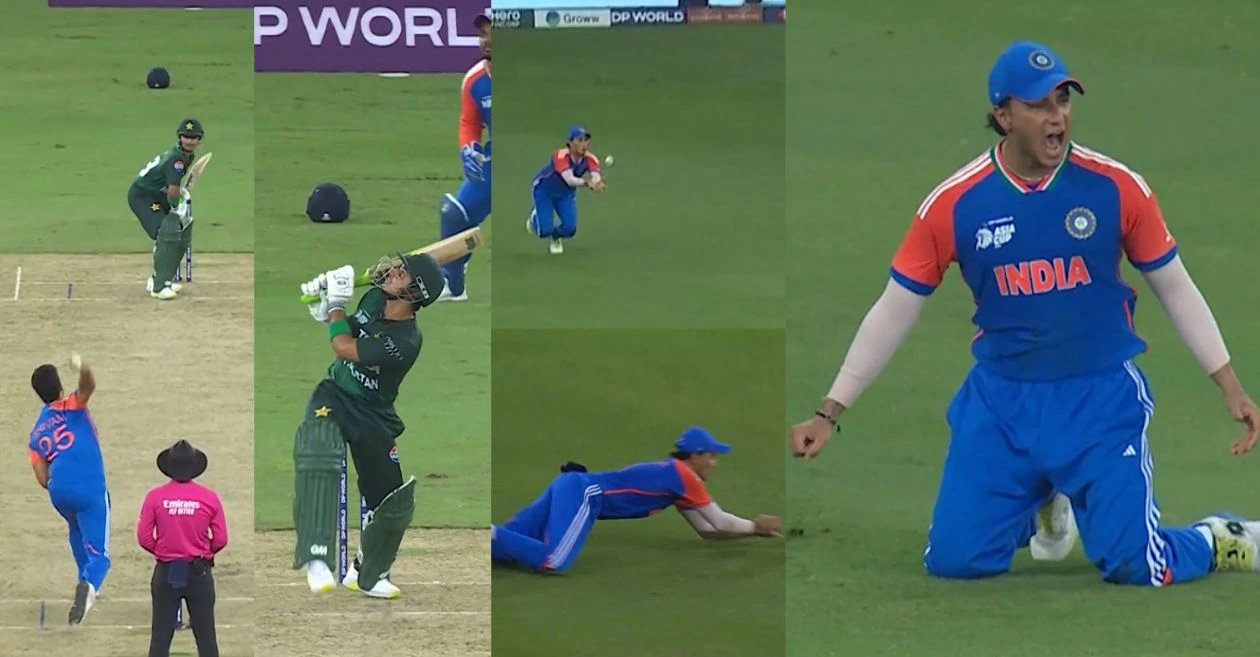The stakes were sky-high as arch-rivals India and Pakistan locked horns once again in the Asia Cup 2025 Super Fours stage. The 14th match of the tournament, held on September 21, 2025, at the Dubai International Cricket Stadium, delivered a gripping contest filled with intensity, drama, and a match-defining moment of brilliance from Abhishek Sharma.
Toss and Conditions: Dew Dictates India’s Decision
With the heavy dew expected under lights, India opted to field first after winning the toss. The Dubai pitch, known to ease out in the second innings due to dew, prompted Suryakumar Yadav to use the chasing advantage. Pakistan, meanwhile, looked to continue their strong starts at the top, banking on their aggressive openers to set the tone.
Pakistan’s Aggressive Start: Farhan and Ayub Fly Out of the Blocks
Pakistan’s opening duo of Sahibzada Farhan and Saim Ayub started on an attacking note. Farhan led the charge with crisp strokes, driving and pulling with authority, while Ayub played second fiddle, ensuring rotation of strike.
Within the first six overs, Pakistan had surged to 50 without loss, putting early pressure on India’s bowlers. Farhan, in particular, looked fluent, reaching his half-century in just 34 balls—a knock punctuated by five boundaries and three towering sixes.
Ayub, although less fluent, supported Farhan well as the two built a 93-run partnership that laid a formidable foundation. However, momentum in T20 cricket can shift rapidly—and it did.
The Turning Point: Abhishek Sharma’s Magical Grab
The breakthrough came in the 11th over, and it was nothing short of spectacular. Shivam Dube, introduced into the attack for a change of pace, bowled a back-of-length delivery outside off stump to Saim Ayub. Looking to continue the aggressive intent, Ayub swivelled and attempted a pull shot.
The ball took the top edge and sailed high toward deep backward square. Positioned perfectly was Abhishek Sharma—a man who had dropped two earlier chances in the tournament but wasn’t about to let this one go.
Sprinting in from the rope with precision timing, Abhishek slid forward and clasped the ball inches above the turf. A moment of athleticism, courage, and redemption. He leapt up with a primal roar as teammates mobbed him. It was not just a wicket—it was a psychological blow.
Ayub departed for 21 off 17 balls with one boundary and a six, leaving Pakistan at 93/2. Dube had his first wicket of the Asia Cup, ending with a short but effective spell of 0.3-0-2-1 at an economy of 5.00.
From Surge to Stumble: India Choke the Middle Overs
With Ayub gone and India’s energy levels heightened, the spinners came into the act. Kuldeep Yadav and Axar Patel bowled in tandem, exploiting the slightly slowing pitch. The bounce and grip made it difficult for the Pakistani middle order to find boundaries.
Fakhar Zaman, who came in at No. 3, showed early intent with a 15-run cameo off 9 balls but holed out trying to accelerate. Suddenly, Pakistan had lost three wickets in 15 balls, and the run rate took a hit.
At the 12-over mark, Pakistan were 103/2. The once-rapid scoring rate had slowed to 8.58, thanks to disciplined bowling and agile fielding.
Bumrah and Pandya Apply the Brakes
India’s spearhead Jasprit Bumrah and the ever-reliable Hardik Pandya executed their roles to perfection. Bowling hard lengths, slower balls, and cutters, the duo ensured there was no easy scoring.
Bumrah’s figures of 1/22 in 3 overs were a testament to his control, while Pandya’s 1/29 kept the batters guessing. Both pacers operated at economy rates below 8.00, crucial in restricting Pakistan’s finishing flourish.
The Last Hurrah: Late Fireworks from Pakistan
In the final phase of their innings, Pakistan relied on skipper Salman Ali Agha and Faheem Ashraf to push the score past 170. Salman played a measured hand with 17 not out off 13 balls, while Faheem provided late fireworks with 20 not out off 8 balls, including two fours and a six.
Despite the hiccups in the middle overs, Pakistan finished with 171/5 in 20 overs—a competitive score, but perhaps 15–20 runs short considering their start.
India’s Superior Fielding: The Difference-Maker
While batting and bowling often grab headlines, it was India’s fielding brilliance that truly turned the tide. From sharp stops in the infield to boundary-line saves and Abhishek Sharma’s jaw-dropping catch, the energy and commitment were evident.
Every run saved seemed to increase pressure on Pakistan’s batters, and that pressure eventually resulted in wickets. Abhishek’s effort will be remembered as the highlight reel moment of the Super Four stage and possibly of the entire tournament.
Looking Ahead: Can India Maintain Their Winning Streak?
With this contest setting the tone, India’s confidence in all departments—batting, bowling, and especially fielding—looks formidable. They’ll carry this momentum into the rest of the Super Fours and toward the Asia Cup final.
Pakistan, despite the loss, showed glimpses of brilliance with Farhan’s innings and their late charge. But to succeed in such high-stakes games, converting starts into big finishes remains key.
As for Abhishek Sharma, from being under the scanner for missed catches to becoming the night’s hero, his redemption arc adds a layer of emotional resonance to India’s journey.
Final Thoughts
In high-octane India vs Pakistan clashes, one moment of brilliance is often enough to swing the contest. Abhishek Sharma’s gravity-defying catch did just that. It not only shifted the balance but inspired a spirited Indian defense that subdued Pakistan’s threat.
As the tournament marches toward its climax, India’s combination of youth, experience, and intent makes them a serious contender. But above all, this match will be remembered for a fielder diving forward, hands outstretched, and etching his name in Asia Cup folklore.
Please check for information on the best betting sites in India – https://selectory.org/best-betting-sites/















